Riding in California’s wooded areas filled with towering oak trees and high sagebrush is one of my favorite things to do on horseback. Not only is this type of terrain beautiful and sweet-smelling, it’s also cooler in the oppressive summer heat. Of course, my horse and I are not the only creatures who enjoy this type of habitat. These are the trails where we are most likely to come across deer, coyotes, bears and snakes. Spotting wildlife like this can make trail riding even more special, provided your horse can handle it and you’re knowledgeable about wildlife safety.

Trail Riding Safety Factor: Your Horse’s Reaction
On the other hand, the first time we came across a deer, his reaction was anything but relaxed. He was unable to identify the four-legged creature with a head full of antlers, and every muscle in his body tightened. It felt like he was ready to bolt.

seen wildlife, such as deer. Photo by Budimir Jevtic/Shutterstock
After seeing deer several times, my horse is no longer scared—he’s figured out they are harmless. But it’s nearly impossible to expose a horse to every wild critter he might come across on the trail in advance of that real-life moment.
Building Trust with Your Horse
Lory Walls and Jamie Dietrich are two experienced North American Trail Ride Conference (NATRC) competitors and judges, with thousands of miles of trails around the country under their belts. Both have come across all kinds of wildlife along a variety of trails, and they concur that the secret to dealing with everything from deer to bobcats is teaching your horse to trust you.
“Building trust starts at home, and should be happening all the time,” says Walls. “You can’t expect the horse to be completely unafraid, but you want to be able to channel and deal with the fear. You do his by building that trust and not keeping the horse in a bubble.”
You can earn your horse’s trust by spending time in both the saddle and on the ground, showing him that you can handle anything scary that comes up. Your horse needs to know that you will keep him safe. Time on both the trail and the arena negotiating obstacles can help foster this.
Practice Obstacles
Start by tackling some potentially scary arena obstacles like wood bridges, tarps and poles. Help your horse understand that you won’t ask him to do something that puts him at risk.

Once he has mastered these inanimate objects, expose him to other animals like sheep, goats, barking dogs, pigs—whatever you have access to—while still in the arena. As you help your horse learn to adjust to these animals through regular exposure, he will start to learn to trust you.
Once you feel like your horse is relaxed around domestic animals, go trail riding with someone who has a wildlife-savvy horse for safety and education. Your horse will learn from his trail buddy that wildlife is nothing to fear.
Before you head out on trail alone or with a buddy, be confident that you can control of horse’s feet. According to Dietrich, you want your horse to listen to your hands, seat, legs and voice, even when he’s in a concerning situation.
You also want to teach your horse to wait and watch when he sees something that worries him, instead of just reacting. This takes practice and patience. If your horse stops when he sees an animal or object he’s concerned about, don’t push him toward it until you can feel him relax. It’s important to control you own reaction as well by not tightening your body. If you get nervous, you are likely to produce a fear reaction in the horse.
According to Dietrich, with most wildlife encounters, there’s a momentary startle, and the other critter goes on its way. Big birds like grouse and turkeys make a lot of noise and seem to appear out of nowhere. Even little creatures like rabbits and squirrels can come darting out of a shrub and startle both you and your horse.
In these situations, it’s important to have a good seat to make sure you stay on your horse during that initial spook, and then to work to calm yourself quickly so you can in turn calm your horse.
Dangerous Wildlife While Trail Riding
Most wildlife, like deer, brown bears, coyotes and bobcats, are only a threat if your horse freaks out about them. While these animals will likely freeze or run off when they see horses, a few species are best avoided because of their propensity for aggression.
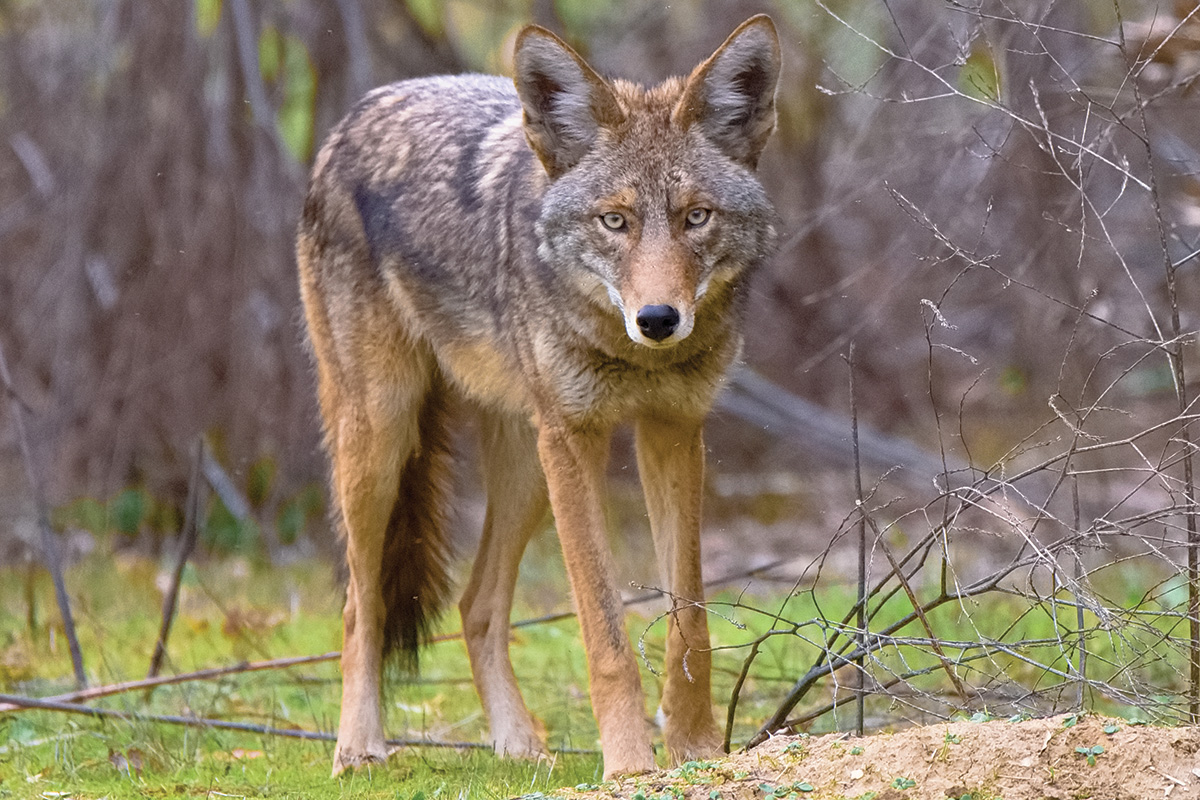
Grizzly bears are one such animal, and are most often encountered in very remote areas in the northwestern states, Alaska and Canada. Riders in these areas often ride with “grizzly bells” attached to their horses’ saddles or breast collars to help warn bears they are coming and avoid startling them. Grizzlies don’t typically attack riders, but momma bears with cubs nearby can be unpredictable.

Another species that can pose a problem for riders is snakes, specifically poisonous ones. Coming across a gopher or king snake is no big deal, but stepping on a rattlesnake or cottonmouth can prove deadly.
Most venomous snakes only bite if they feel threatened, and most horse encounters with these kinds of snakes are accidental. That’s why it’s important to stay on designated trails and avoid going “off-roading” in snake country.
Many people are afraid of mountain lions, probably because our ancient ancestors were likely prey for similar large cats. But today’s mountain lions rarely attack adult horses, especially ones with riders, because they look even bigger than an unmounted horse.
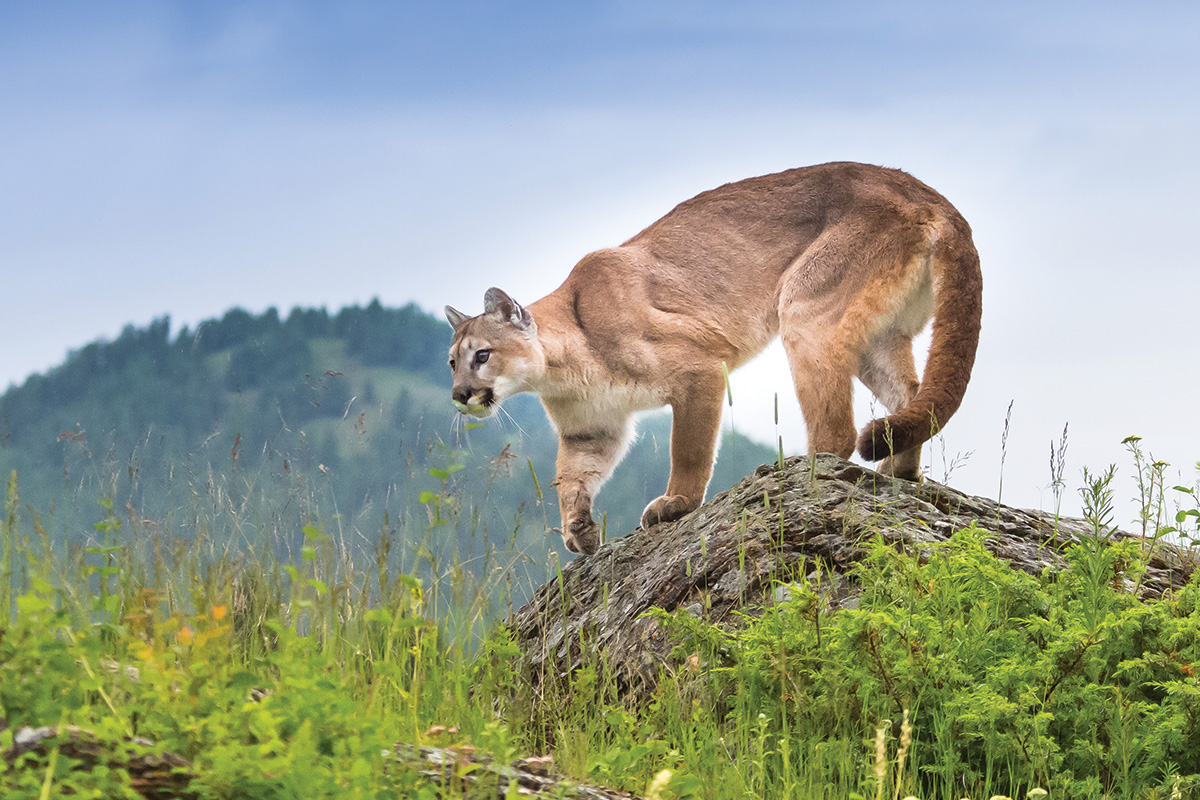
Mountain lions are good at concealing themselves, and you are unlikely to see one when riding. If you do, your biggest challenge will be keeping your horse calm. Like humans, horses tend to have a visceral reaction to large predators. If this happens, fall back on your horse’s training and let him know he can trust you to handle the situation.
Use Common Sense While Trail Riding
It goes without saying that all wildlife should be given a wide berth whenever possible. Wild animals typically become aggressive if they feel threatened and will always opt for flight over fight if they can.
Keep in mind that female mammals such as bears, mountain lions, moose and coyotes may behave aggressively if they feel their babies are in danger. If you see a mother and her offspring along the trail, turn around and head in the other direction.
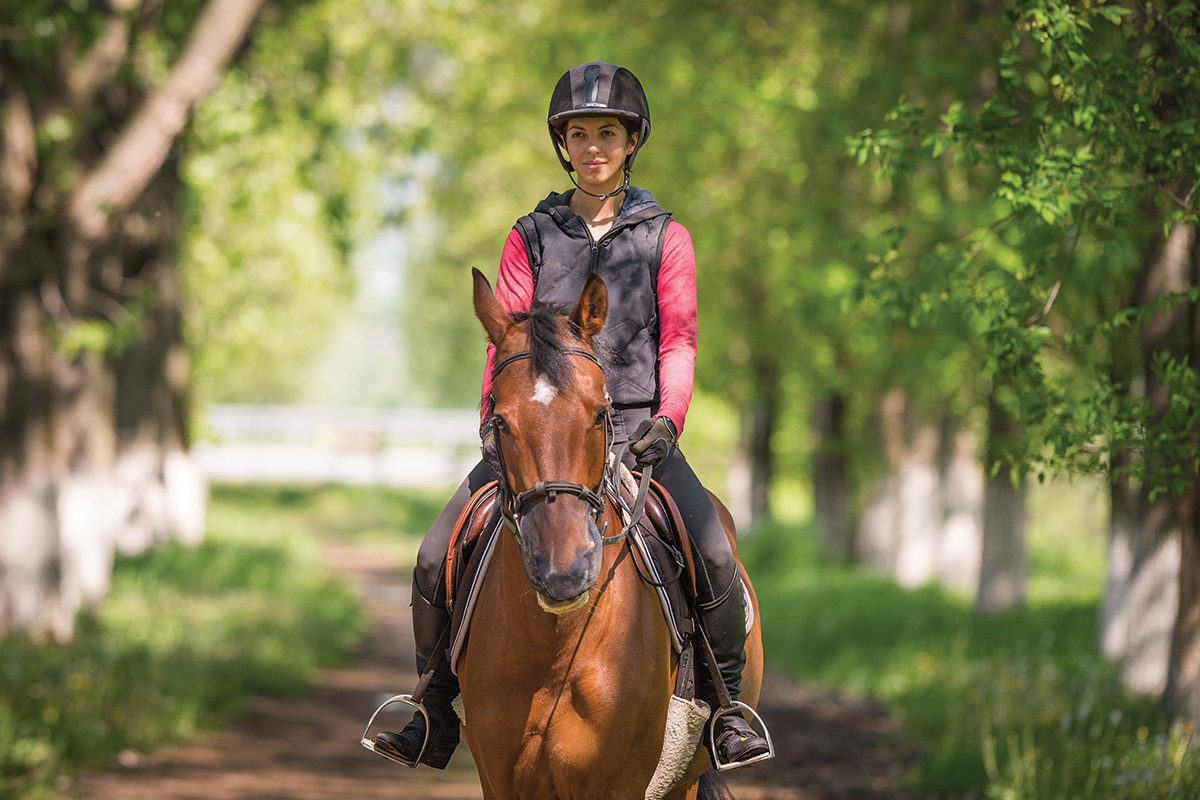
Encountering wildlife on the trail can be an exhilarating experience. It is something many trail riders hope for in their journeys, and something they remember for a lifetime. Establish an understanding of wildlife safety and work with your horse to build trust so when you come across a new animal while trail riding, you will both enjoy the moment.
This article about wildlife safety while trail riding appeared in the August 2022 issue of Horse Illustrated magazine. Click here to subscribe!



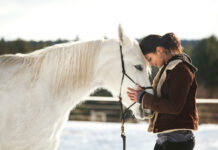
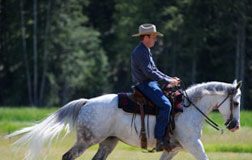

Excellent article! We never know what we’re going to come across while out riding. One time my horse and I met an emu!